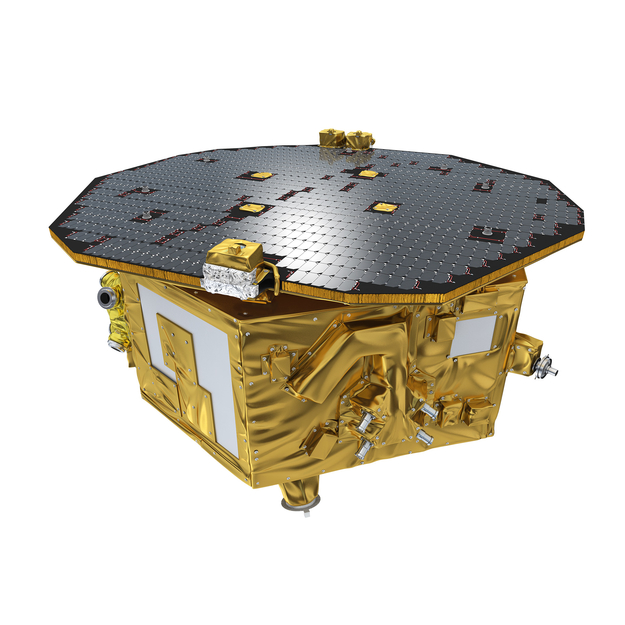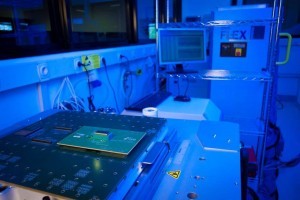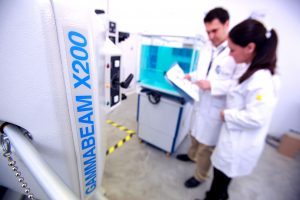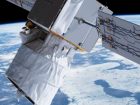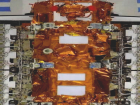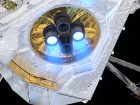The mission
LISA Pathfinder is paving the way for future missions by testing in flight the very concept of gravitational wave detection: it will put two test masses in a near-perfect gravitational free-fall and control and measure their motion with unprecedented accuracy. LISA Pathfinder is using the latest technology to minimise the extra forces on the test masses, and to take measurements. The inertial sensors, the laser metrology system, the drag-free control system and an ultra-precise micro-propulsion system make this a highly unusual mission.
LISA Pathfinder is designed to test one of the key ideas behind gravitational wave detectors – that free particles follow geodesics in space-time. The mission can show this more accurately than has been done in the past by tracking two test masses nominally in free fall, using picometre resolution laser interferometry. Several new technologies have been developed, firstly to isolate the test masses from external forces when they get to space, and secondly to allow for the extremely small distance measurements to be performed by an onboard interferometer.
It was launched on 3 December 2015. The transfer to its operational orbit at L1, a virtual point in space some 1.5 million km from Earth towards the Sun, was completed by 22 January 2016. The initial set-up and calibration phases took about three months, then the in-flight demonstration of the experimental technology started. The science operations are divided into two blocks: 90 days for the LTP and 90 days for DRS.
Alter Technology was in charge of the engineering, testing, coordinated procurement and final lot acceptance of the electronic components on-board the satellite.
In our laboratories were performed technological evaluations, radiation testing, testing to ensure the functionality and quality of the electronic components.
More than 2000 diferent types of components were tested and procured between years 2005 to 2008.
7 June 2016 – 1st scientific results
1st #LISAPathfinder results presented tomorrow! Join us via livestream & @reddit_AMA #AskESA https://t.co/M0A0aYC5E9 pic.twitter.com/GzxM84HIzr
— ESA Science (@esascience) June 6, 2016
- Quantum Key Distribution - 7th November 2022
- Conducted Immunity - 20th May 2019
- Electrical transients Test - 2nd May 2019


